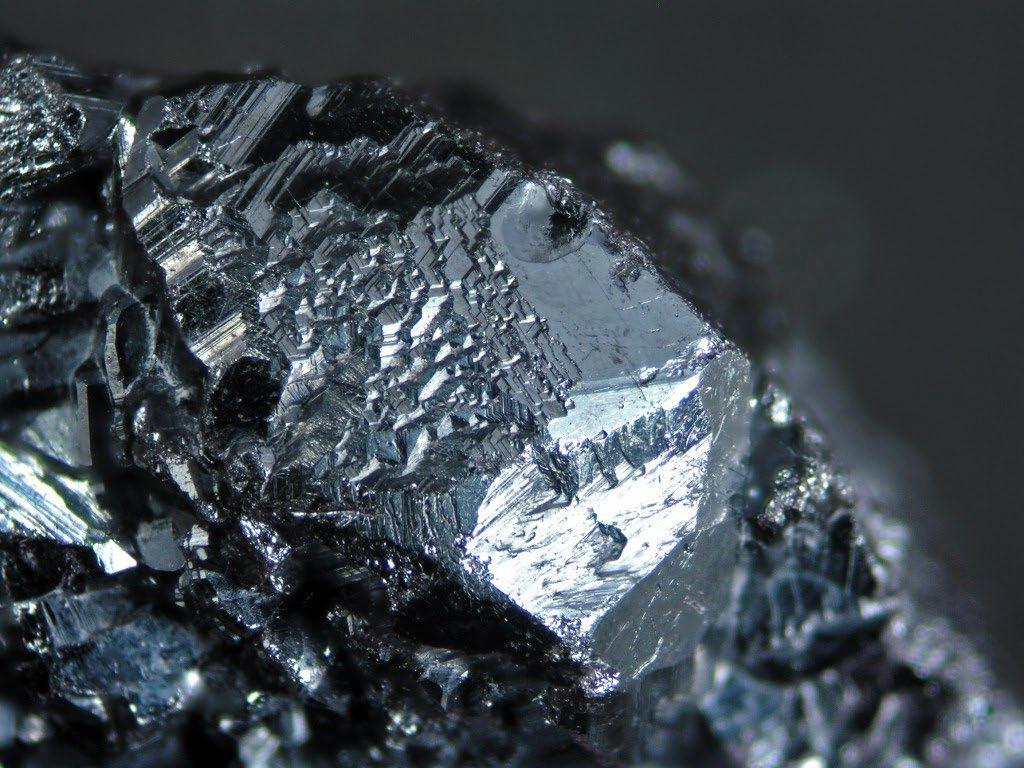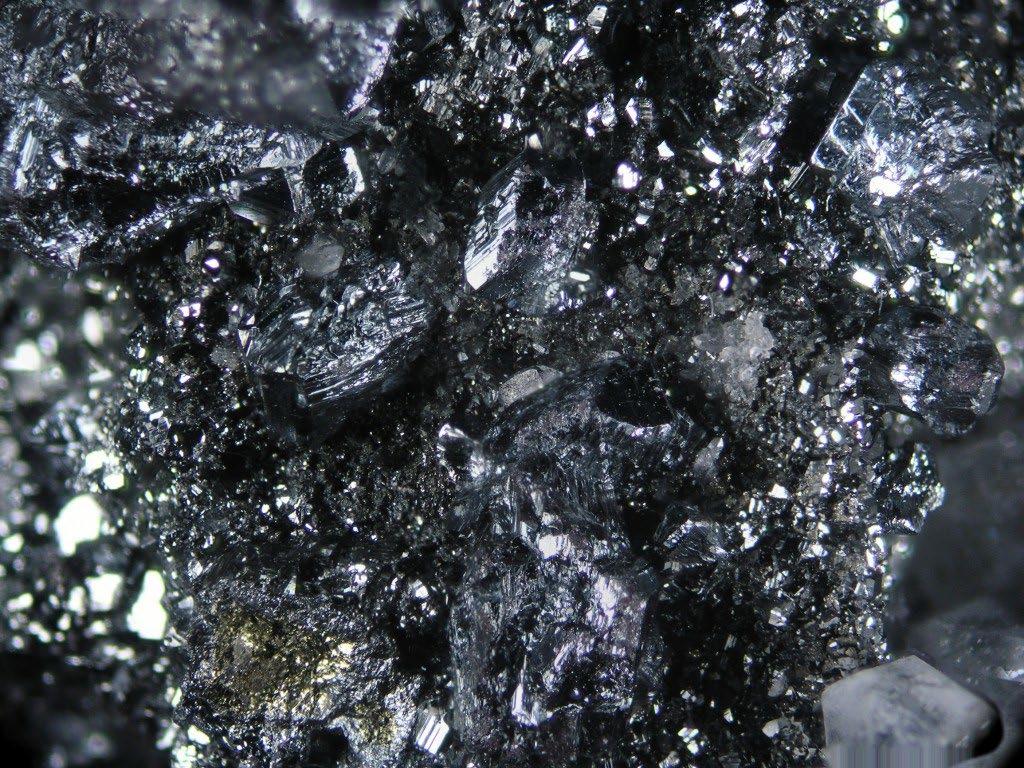
1 minute read
The silver minerals of San José district, Oaxaca (México)
The beautifully crystallized silver minerals from San Jose mine (San José del Progreso, Oaxaca, México) constitutes a recent and very interesting novelty for those interested in specimen and topographical mineralogy and mineral collection. Here, we will summarize our mineralogical study on some crystallized samples that were put on the market.
The San Jose mine
Advertisement
The San Jose mine, located in the «Progreso» concession, in the San José del Progreso municipality, benefits Ag-Au bearing quartz (carbonate) veins that cut andesite volcanic rocks. The postulated metallogenic model suggest that the mineralized veins in San Jose del Progreso and San Jeronimo Taviche constitutes an epithermal Ag - Au mineralization, associated to the intense hydrothermal and hot spring activity in the margins of a collapsed caldera subsequent to an intense subaerial volcanism episode during late Cretaceous or CretaceousTertiary boundary. The mineralization is classified as «low sulfidation» Ag - Au vein mineralization, based on mineralogical features, as dominance of silver sulfosalts and absence of enargite. The mineralization is mainly fine grained and disseminated pyrite, with acanthite, silver sulfosalts, sphalerite and galena, and hosted by quartz with variable carbonate or disseminated in hydrothermal breccia. The veins could exceed 10 meters thickness and the presence of vugs and drusy cavities is common, favoring the formation of well developed crystals.
Minerals
We studied some silver minerals from the San Jose district, mainly using Raman spectroscopy and, in some cases, elemental analysis by X-ray emission spectroscopies.
Freibergite - Tetrahedrite and TennantiteTetrahedrite series
These series consti tutes the most common silver bearing mineral in the studied samples. Freibergite is commonly associated to other silver sulfosalts as pyrargyrite and miargyrite, in a clearly defined depositional sequence. It forms dark grey metallic crystals, occasionally with modified tetrahedral shape, massive and forming complex twins and aggregates that difficult the de visu identification. Actually, the mineral should be regarded as FreibergiteTetrahedrite series, according to this ternary diagram:
Due to the high silver content, the mineral could be labelled as Freibergite. Anyway, individualized analysis of specimens is mandatory if one wants to write the correct label.
The Tennantite, the As dominant analog of Tetrahedrite, is present in the form of steelgray to iron-gray tetrahedral and modified tetrahedral crystals. The identification was confirmed by Raman and EDS spectroscopy. In the samples studied, Tennantite does not appear accompanied by Pyrargyrite or Miargyrite, a clue to its visual identification.
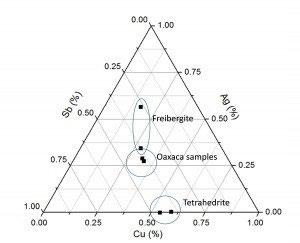
Pyrargyrite-Proustite
Despite the presence of Tennantite, we did not observed the arsenic end of this series, Proustite, in the specimens studied. Instead, we found Pyrargyrite in the form of deep red, As-free prismatic crystals on Freibergite. The crystals in the studied samples are millimeter-size.
Pyrargyrite
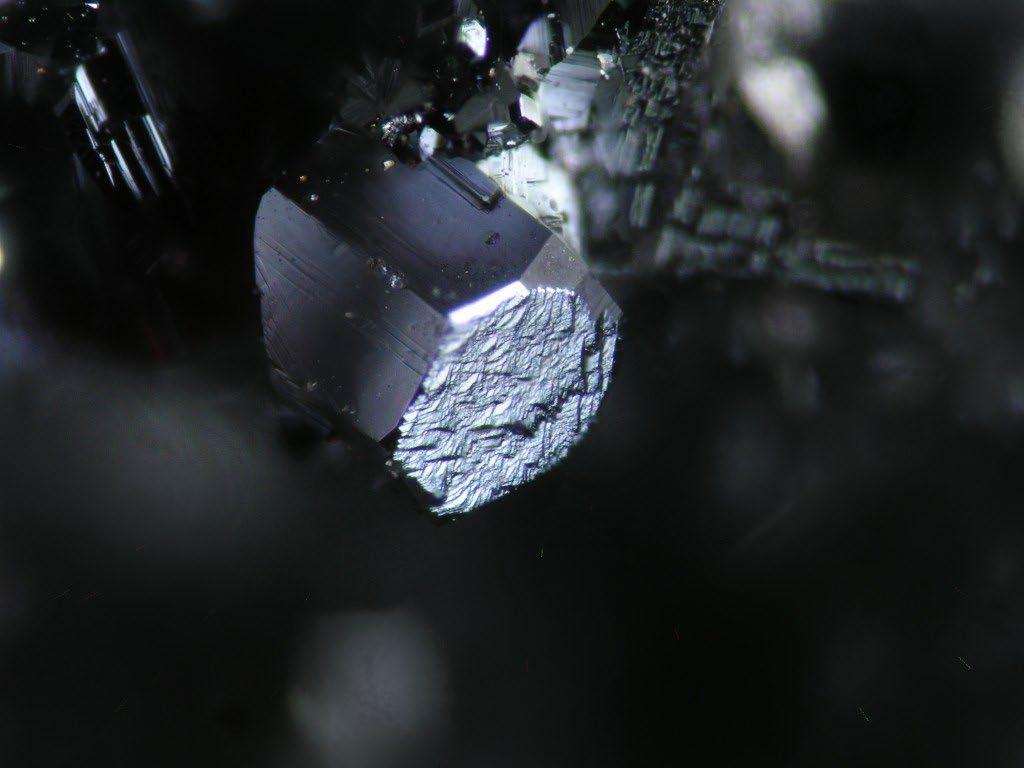
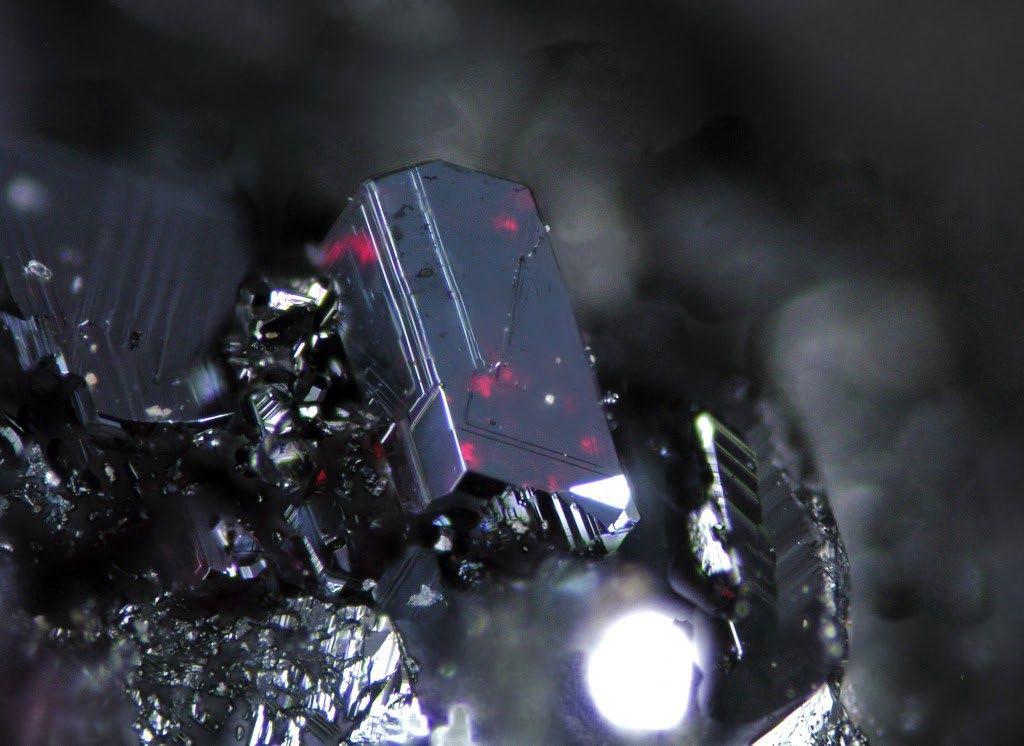
Miargyrite
This mineral maybe the most interesting silver sulfosalt from a collection point of view. The miargyrite are found in the form of grey black metallic crystals and groups, occasionally reaching the centimeter size.
